Model ships made of bone. On this Halloween Eve, that’s a strange and sort of mysterious idea. It might seem even a little bit creepy to think about.

Who would think to use discarded bones to create something as beautiful as a model ship?

Curiosity Aroused
I first learned about these, not from my history degrees, but from the Museum’s current exhibition, The Nelson Touch. This exhibition is about one of the world’s most revered naval commanders — a man glorified by the citizens of Britain and Europe as their savior: Horatio Nelson. An interesting model in this exhibit really caught my attention. So, of course, I fell down the rabbit hole (or sinkhole, as we like to say in our department ㅡ you see, we really have no choice when this happens!) of looking into the history of the ship, because this is just what we do!
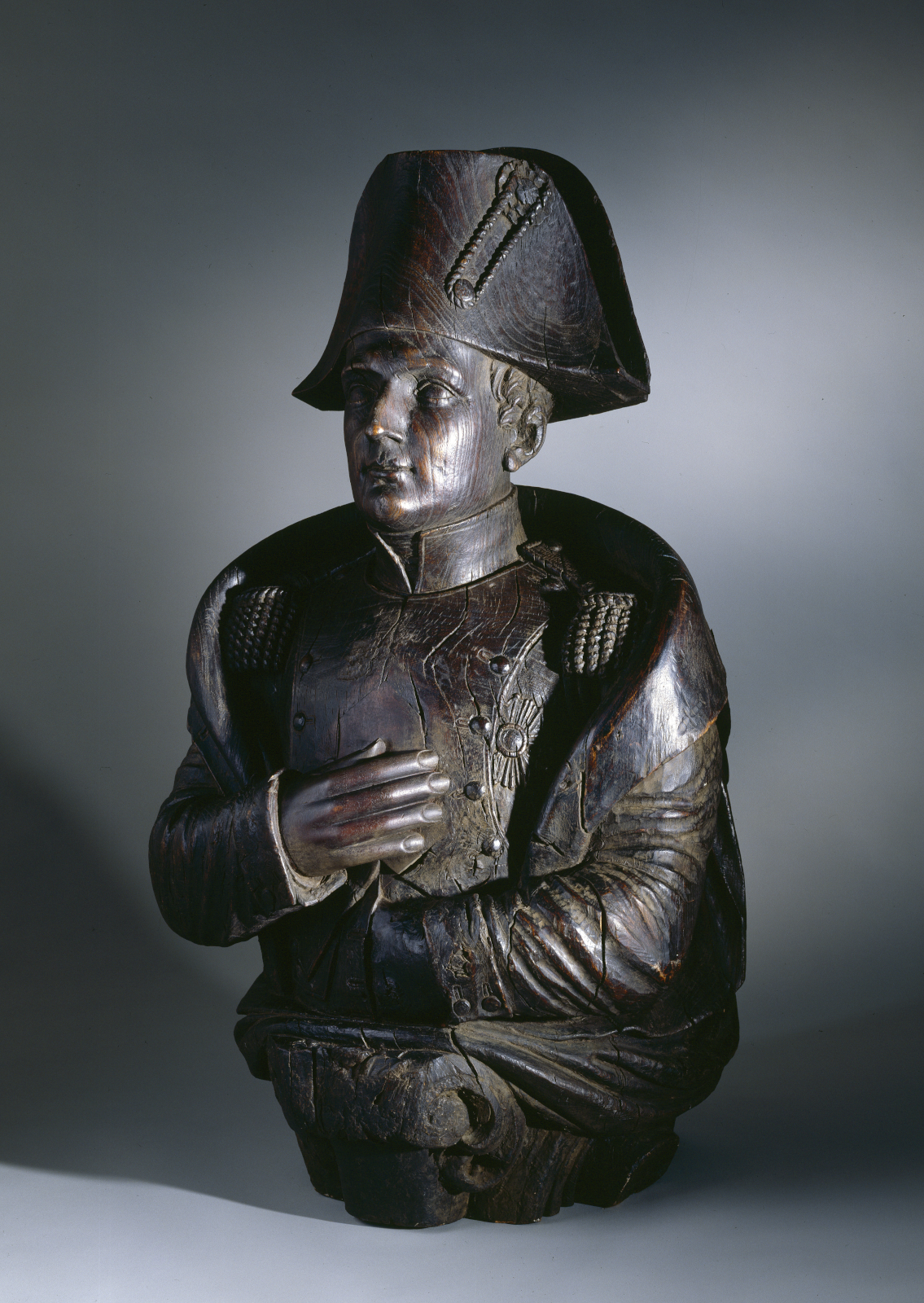
The idea that it was made from bone was truly astounding. Here is a photo of the ship from our Collection. And the description from our catalog:
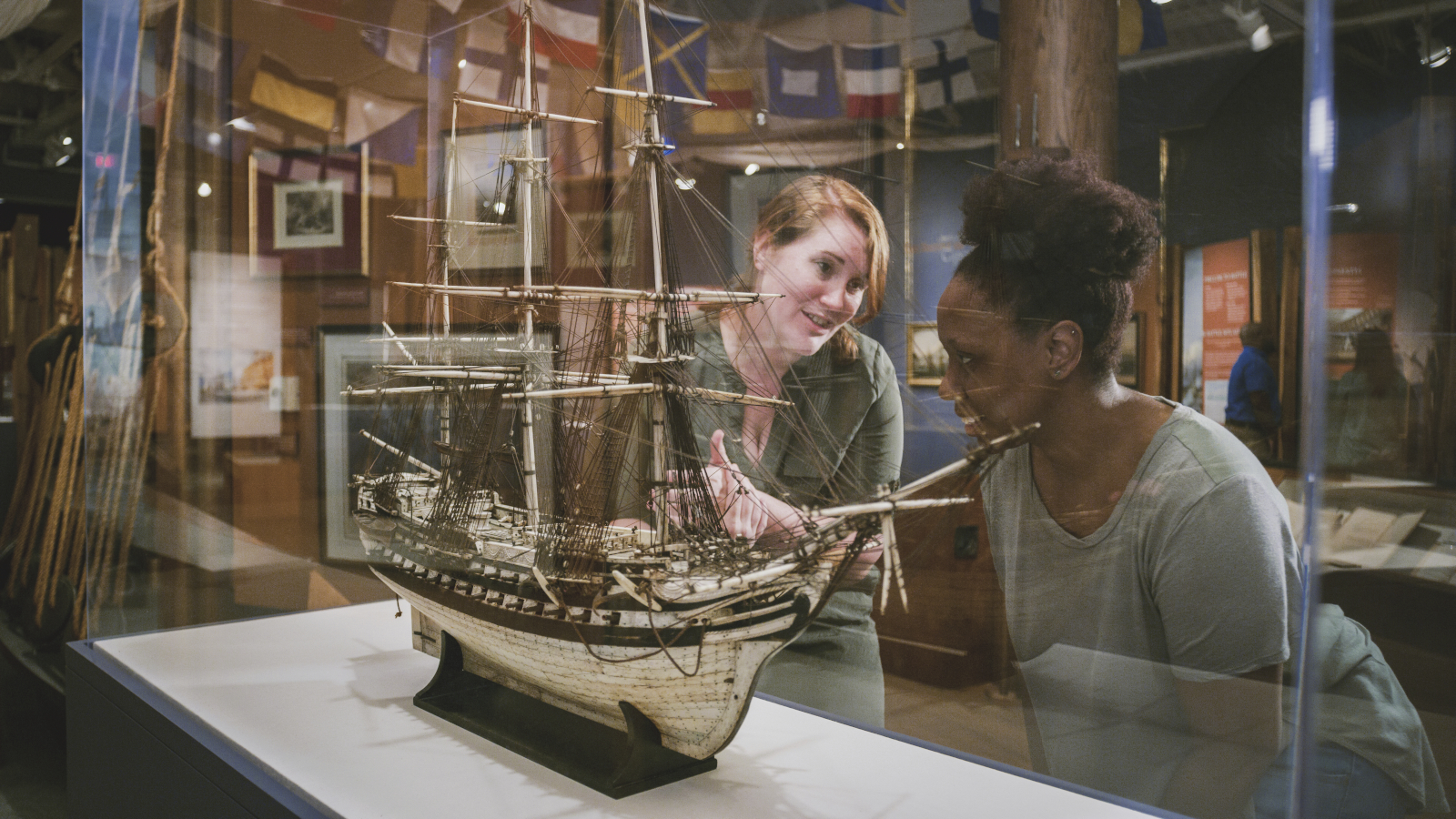
“This model depicts a fully rigged ship-of-the-line, a warship designed to fight in the line of battle that was the practice of the day. Planks of bone have been pinned over a core of wood. Most of the mast, spars, and blocks are bone, and the gunport strakes are baleen. The figurehead is a classical warrior, and the stern transom galleries are beautifully carved. Five wood boats hang from the rigging or davits. The gun decks could be retracted by pull toggles that protrude from the stern. Model of Third-Rate, 74-Gun Ship-of-the-Line, circa 1801.”
Pandemic Skills?
During times of stress, as many of us have found during the pandemic, all kinds of new talents and skills have emerged. Maybe you’ve been baking up a storm? Learned how to play a new musical instrument? Because we’re working from home seemingly all the time? Attempting new things that you never thought would be possible? Recreating famous paintings with stuff just around your home because no one but your cat can see? Hoping you can actually change out of jammies for your Zoom staff meeting?
Floating Prisons
Well, there’s an entirely different level of busy work which was also a huge moneymaker for the powers-that-be. During the Napoleonic Wars, from about 1793 to 1815, a well-organized industry was going on with French sailors being held as prisoners of war. It is estimated that more than 200,000 POWs were held in Great Britain during this time. They were confined in prisons all over England and Scotland in “hulks.” A hulk is a dismantled warship or merchant ship, often without masts, hence the name. Many of these were along the southern English coast near London. They were also located near the North Sea coast in Yarmouth and Tynemouth, near Manchester and Liverpool. In Scotland, the hulks were near Edinburgh and Perth. The conditions can only be described as, well, gross.
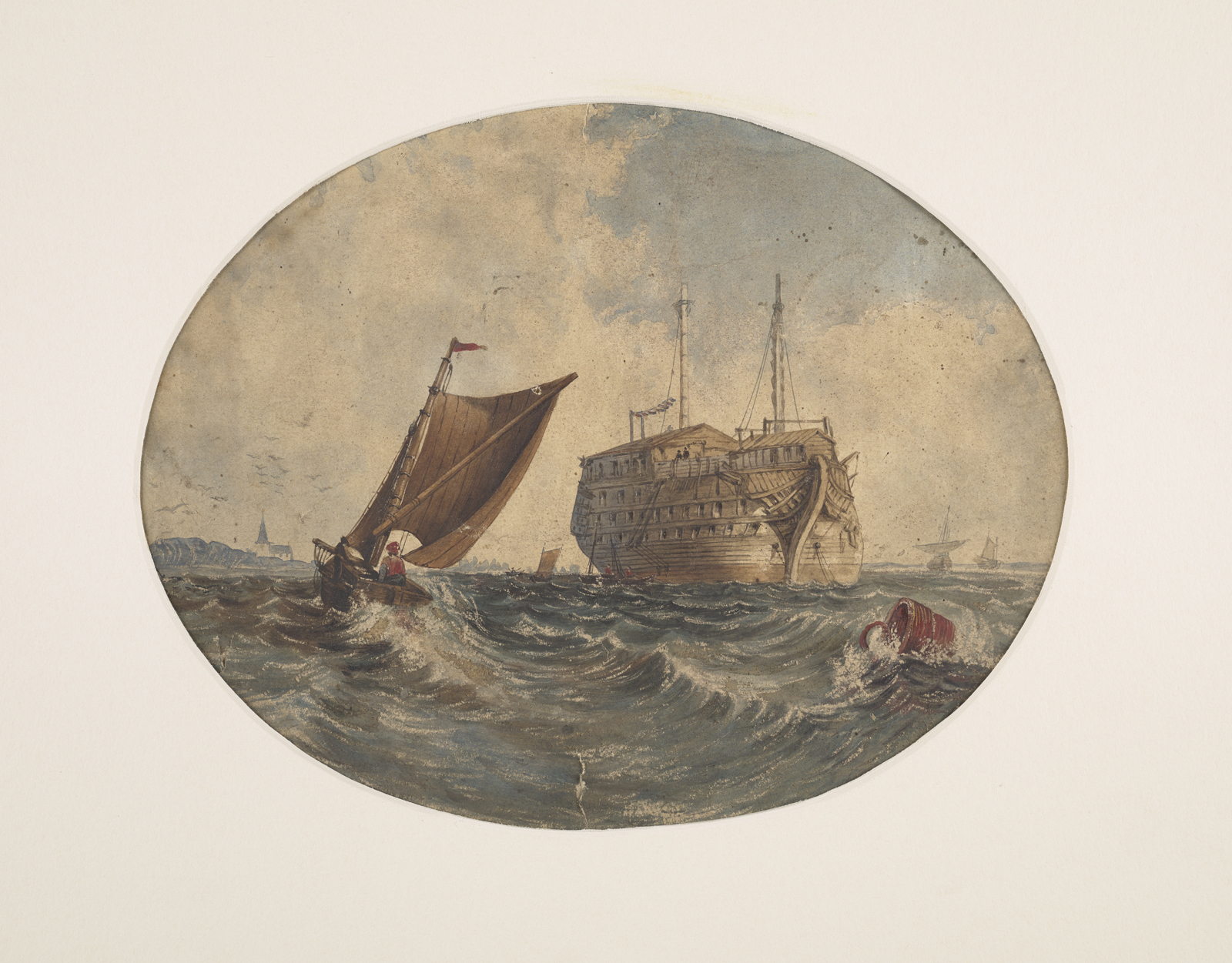


Prison ships were notorious for their lack of hygiene. One inmate commented, “…it is impossible for anyone to be on board the hulk even for a few days without contamination”.
On land, there were also large farms, called “borough gaols” and “strong houses.” This is also the period when the infamous Dartmoor Prison was constructed, which may very well be my next blog post.
These model ships were built to be sold. Many of these prisoners had been skilled craftsmen who were then pressed into Naval service. It kept the prisoners occupied and busy. Several prisoners formed working groups to be able to produce large numbers of bone ship models. Most of the materials used were saved from their food rations. Beef portions were fairly common with a total of 5.25 pounds per week per prisoner!
The bones were collected and treated because they would be no use as-is. Duties included sorting bones according to size and quality. Another prisoner would be responsible for cleaning and bleaching using several different techniques: sunlight, sulfur dioxide, hydrogen peroxide (also used by the makers of straw mats), lime, and soaking in potash lye. Bones would need to be prepped and cut very thin for planking. Tools were also constructed such as small lathes for turning intricate parts of the ship. Other supplies were procured from items like barrels, broken glass, and more. Other needed supplies would be supplied by the guards because they knew that money could be made! Silk threads were traded and often human hair was used for rigging.
Other Creations
Model ships were just one of the things that prisoners constructed. They also built toys, games, and mechanical automation toys. Another group of French prisoners was trained to be lace makers! Many of you will remember our exhibition, Sailor Made, where we highlighted the amazing collection of things made by sailors at sea and also as prisoners of war. Here are a few examples of those intricately made items from our Collection.
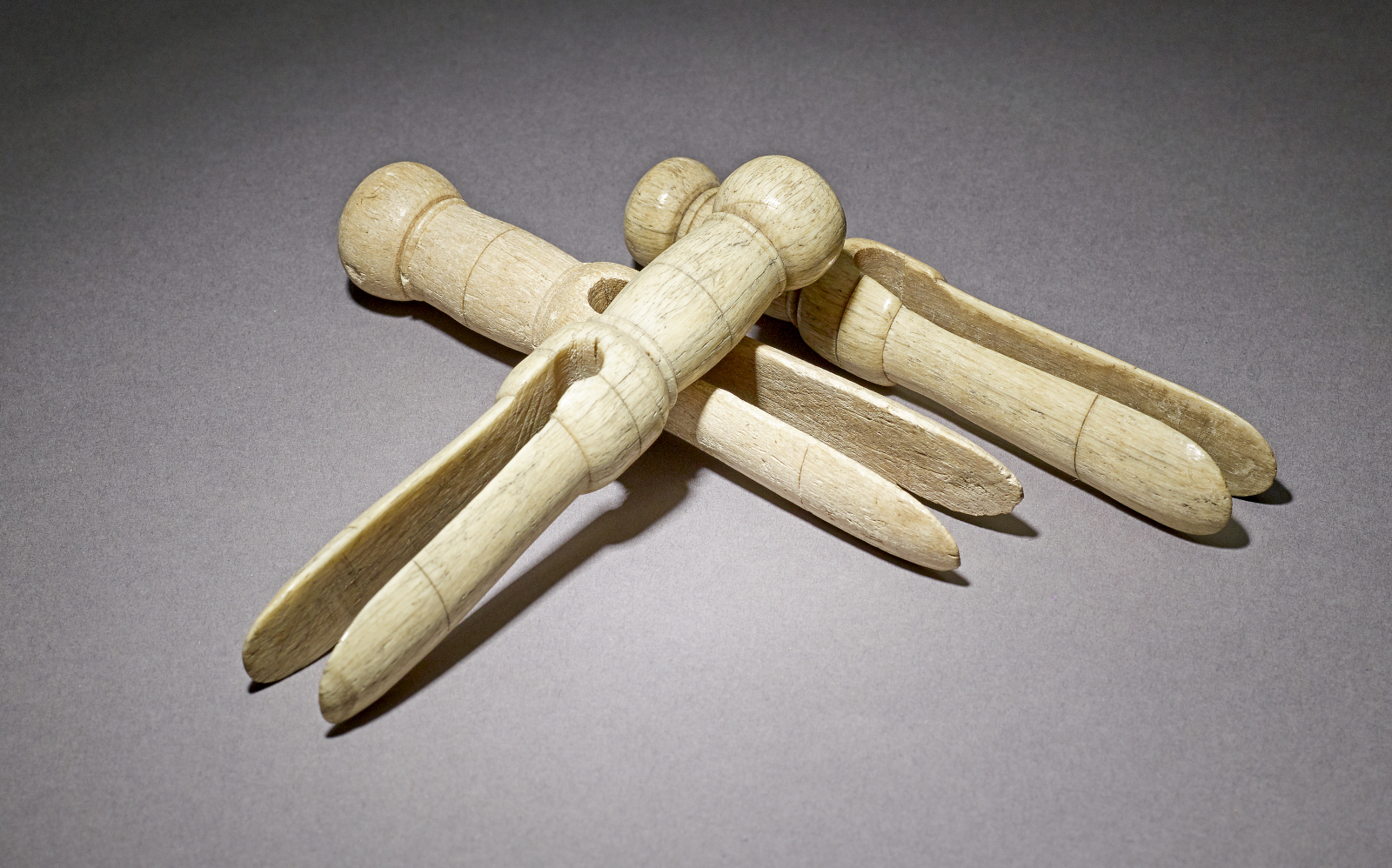
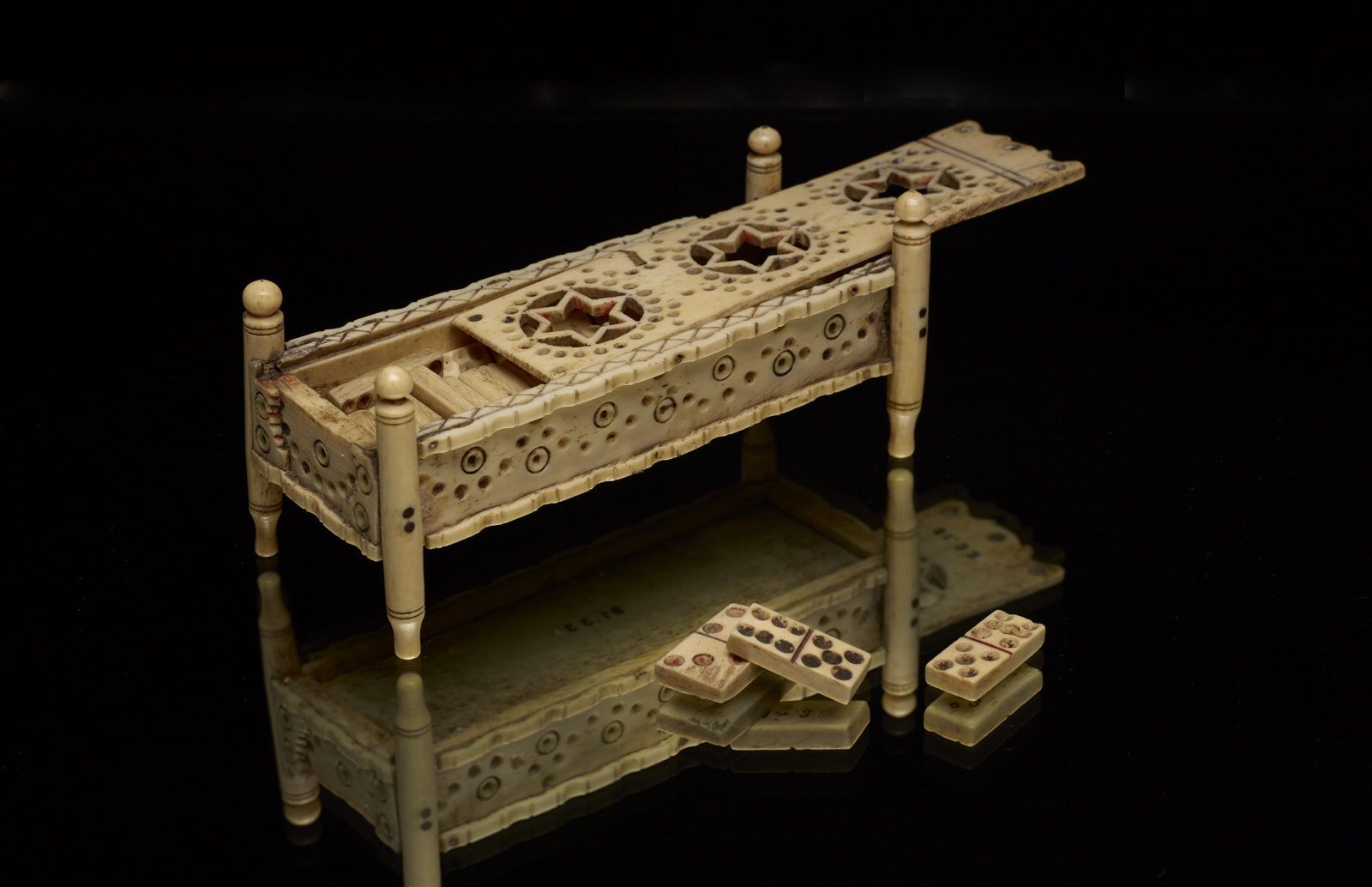
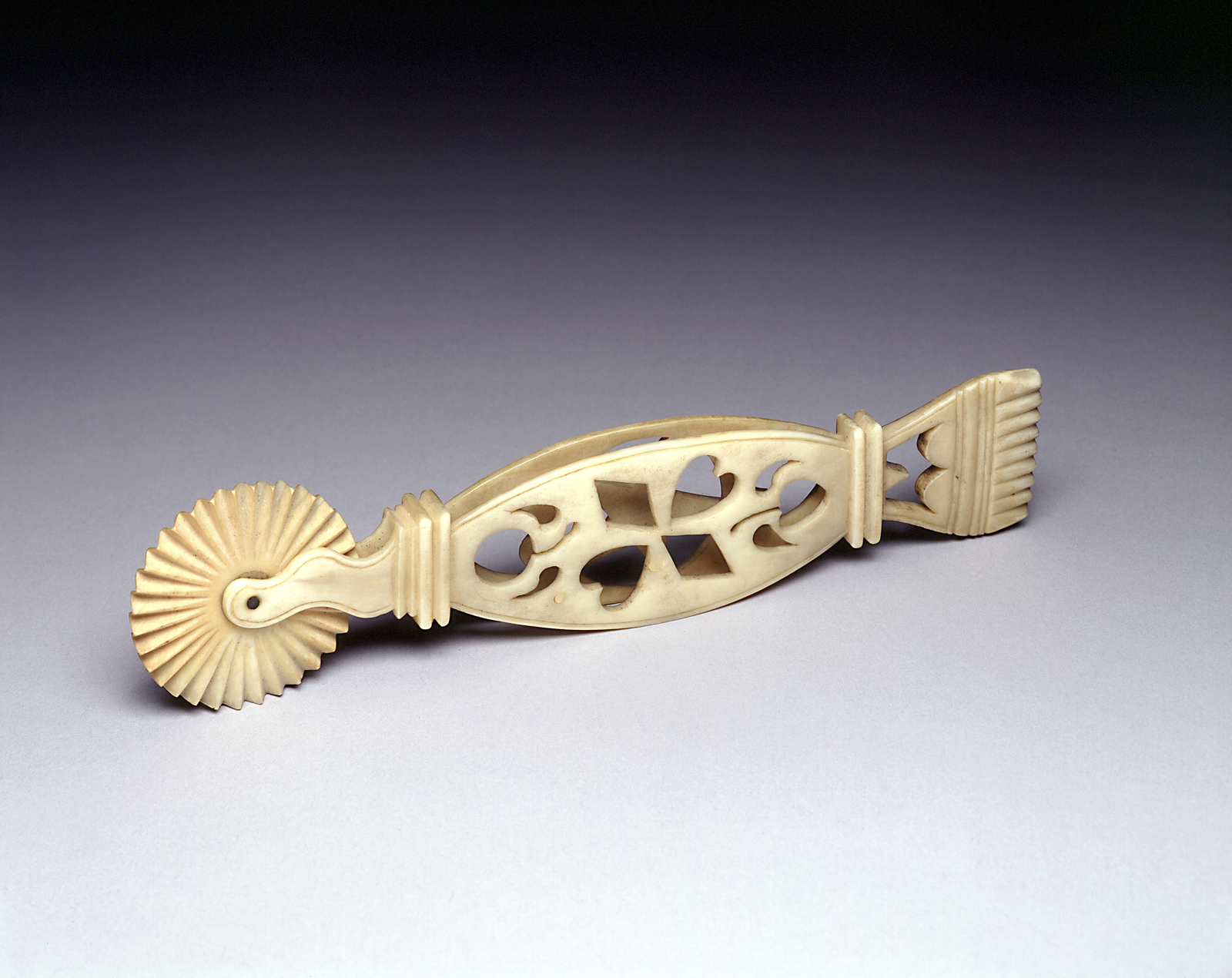
The Mariners’ Museum and Park’s Bone Ship Models
We have three confirmed bone ship models built by prisoners of war. I’m sharing some detailed photos of one of them. It is a model of a ship-of-the-line, ca. 1800.
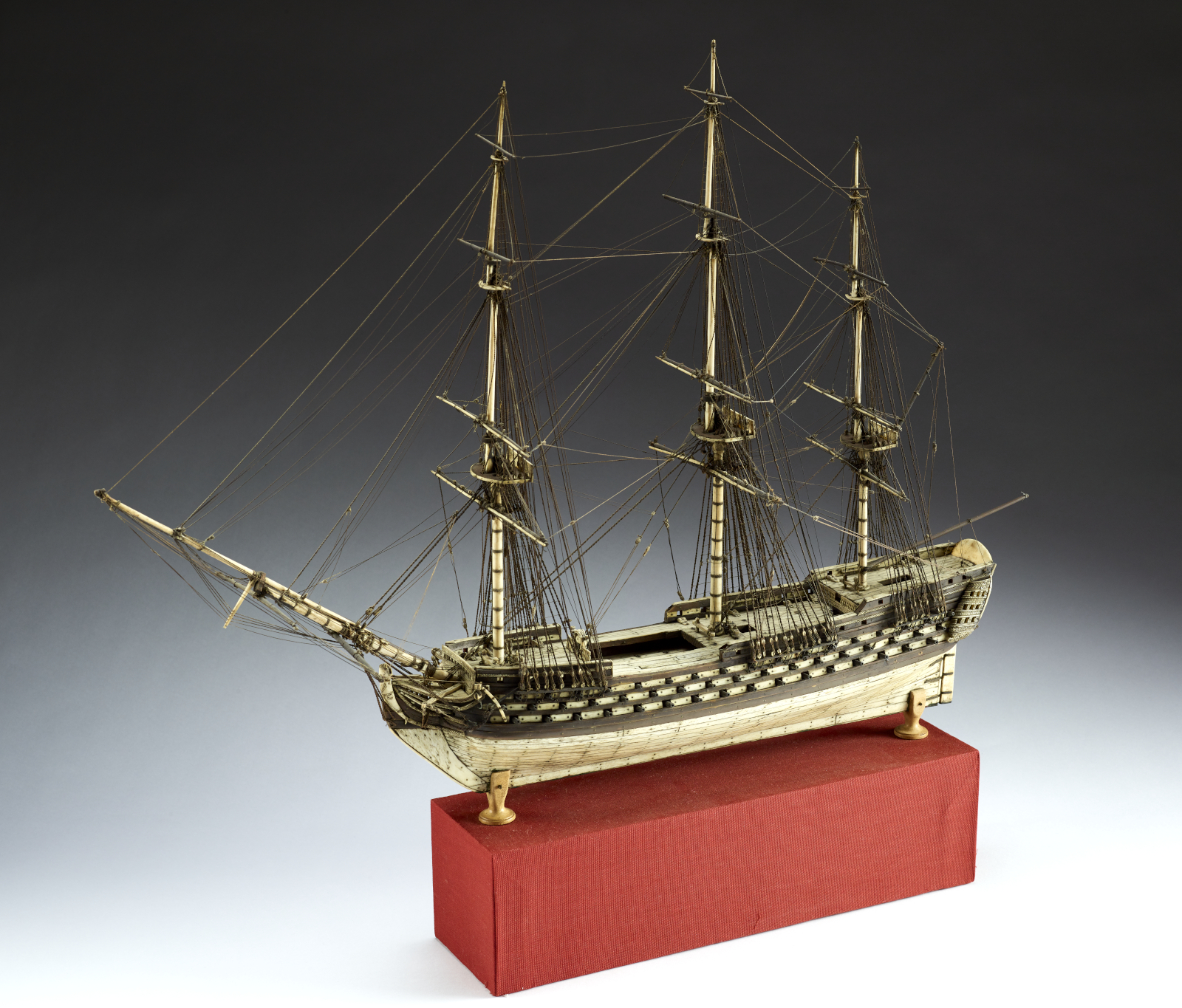
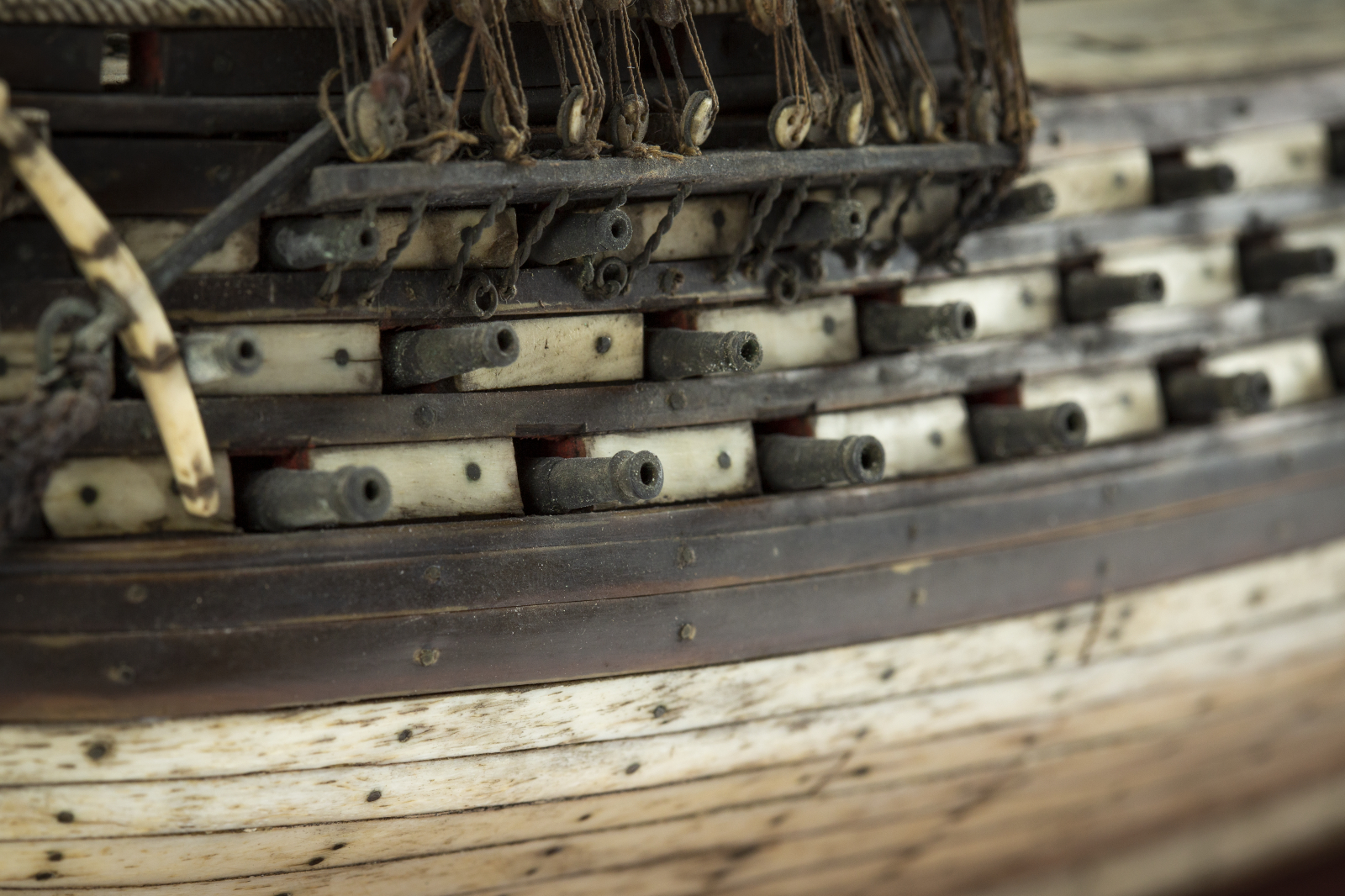

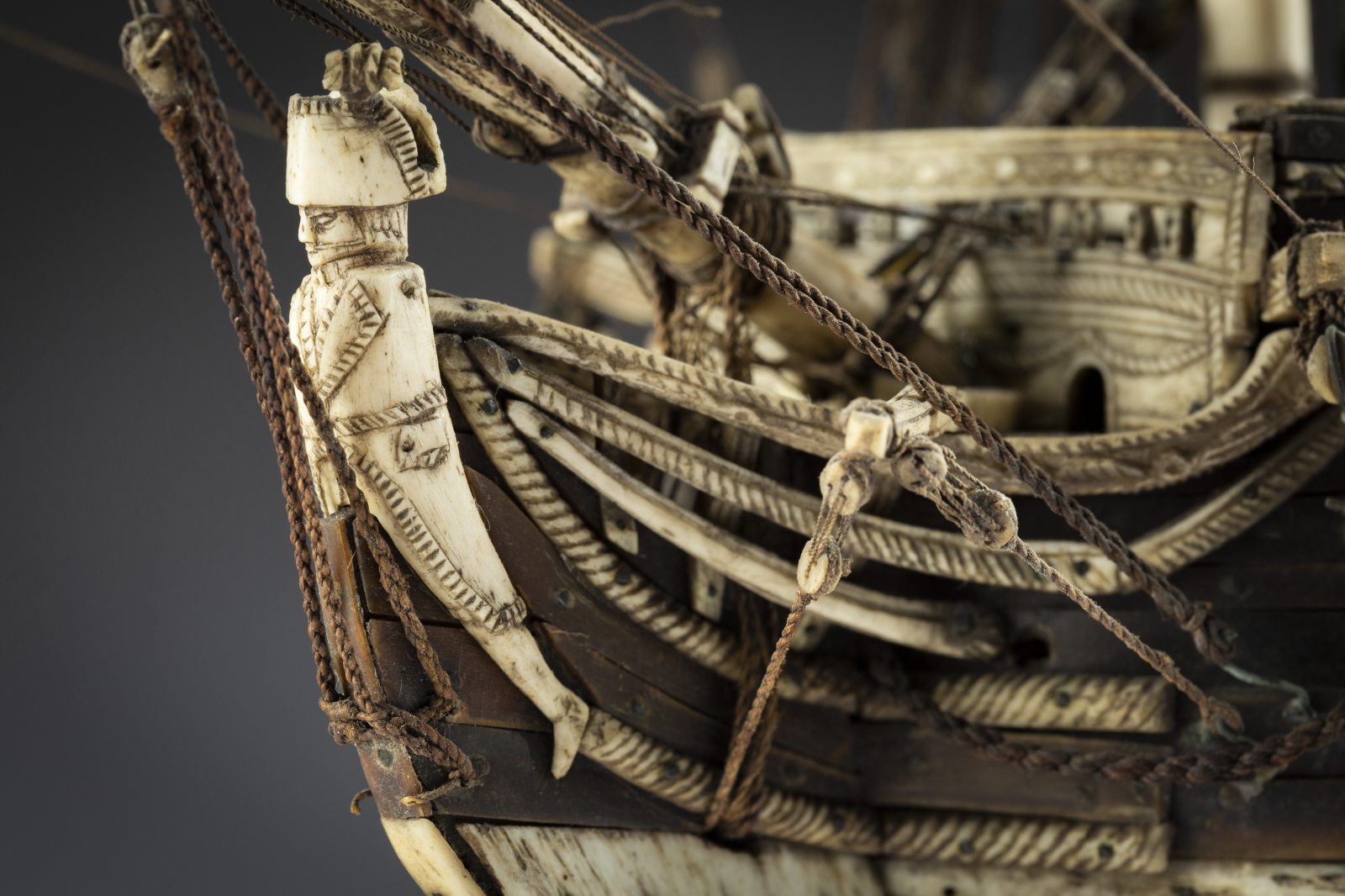
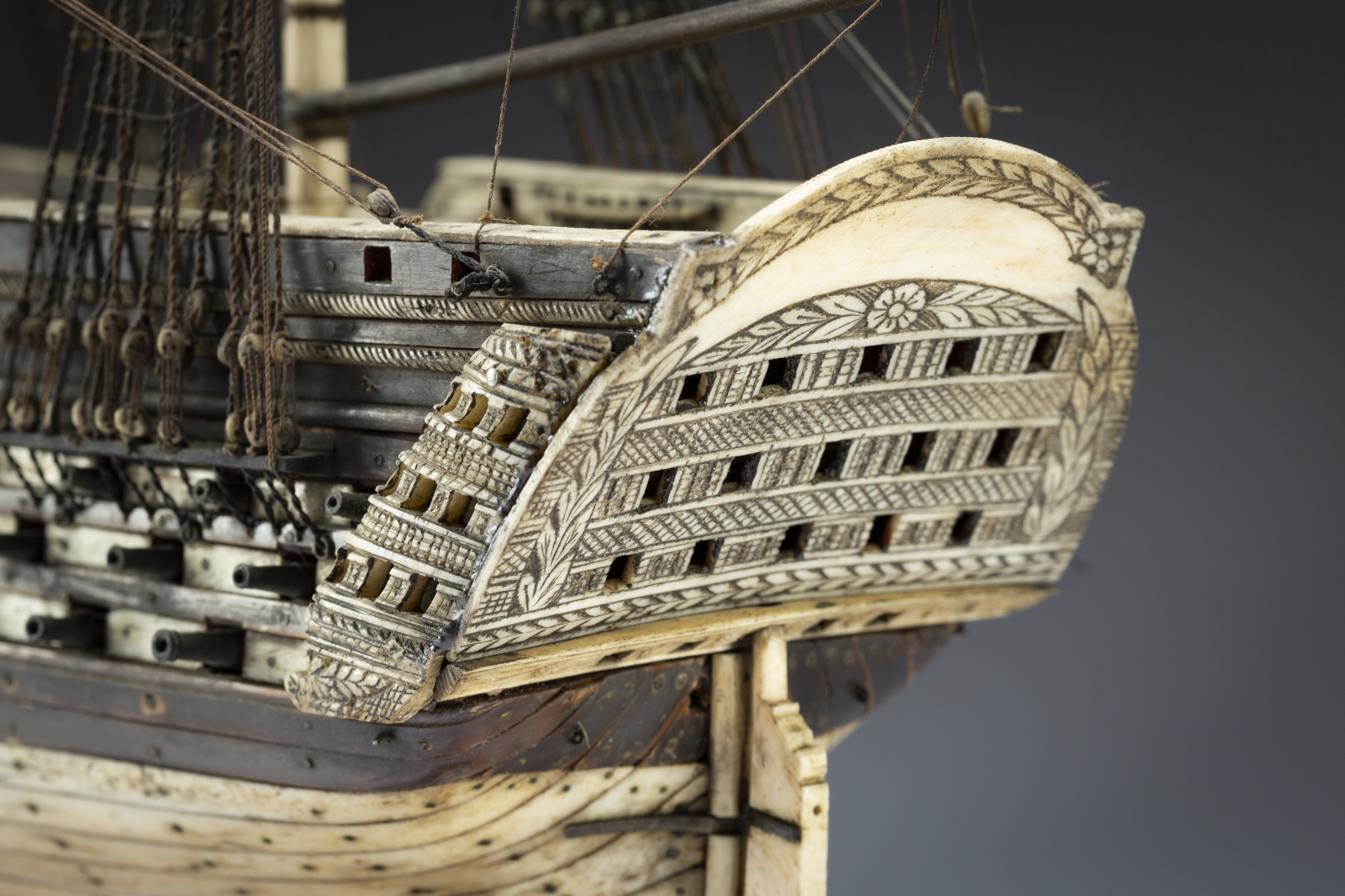

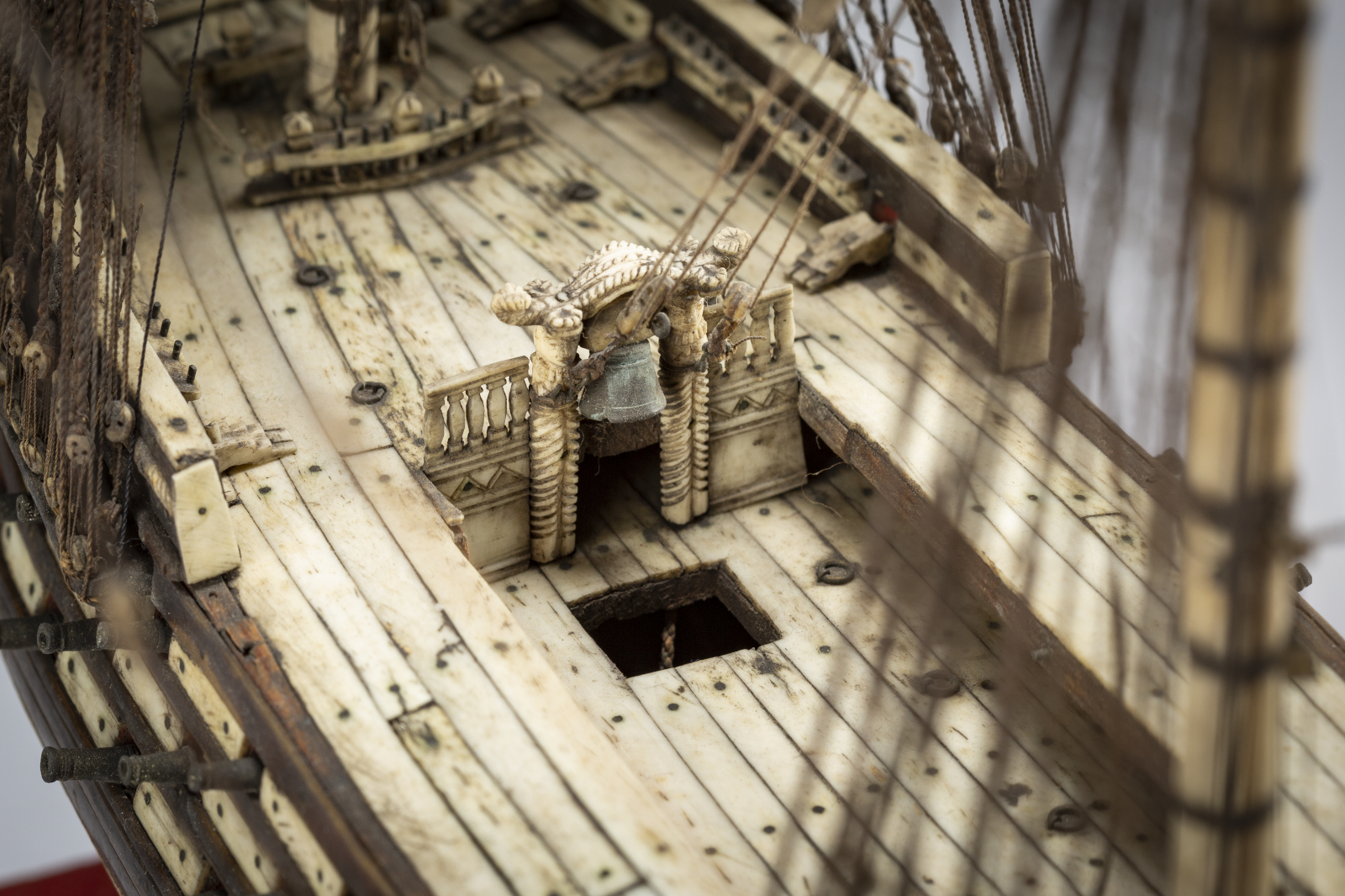
HMS Victory
The majority of models were built from the memory of the designer and lead builder. There is one exception though, which is a model of HMS Victory which is on display at the United States Naval Academy Museum in Annapolis, MD. After Nelson’s death, the British Admiralty ordered 15 recently released prisoners to create the model of Nelson’s ship. The wooden core of the ship, that the bone is attached to, supposedly comes from original wood from HMS Victory. The model stood on the sarcophagus of Nelson for 27 years and then was sold at auction in 1915. The following is a great little 8-minute video from Donald Preul, Curator of Ship Models at the United States Naval Academy.
In closing, I hope you have enjoyed these amazing creations as much as I have. There are not very many of these ships in the world, probably less than about 500. But here are some more sources for you to explore!
Aks, Fee-Christine. The Green Woman Novel. Middletown, Delaware: CreateSpace Independent Publishing Platform, 2015.
Barker, R.J. The Bone Ships (fantasy novel), Orbit Publishing: UK and US, 2019.
Freeston, Ewart C. Prisoner-of-War Ship Models 1775-1825. Annapolis, MD: Naval Institute Press, 1973.
Stein, Manfred. Prisoner of War Boneship Models: Treasures from the age of the Napoleonic Wars. Hamburg, Germany: Koehlers Verlagsgesellschaft, 2015.
Here is a great list put together by Lars Bruzelius of all known bone ship models and where they are located [note: The Mariners’ Museum’s ships are not included in this list!]:
http://www.pow-boneships.de/html/world.htm
Don’t forget to check out the Collections at the following museums in the USA (including ours!):
The Mariners’ Museum and Park https://catalogs.marinersmuseum.org/search?query=bone%20ship%20models
The United States Naval Academy Museum https://www.usna.edu/Museum/collections/rogers/index.php
The Smithsonian https://www.si.edu/search/collection-images?edan_q=bone%2Bship%2Bmodel&